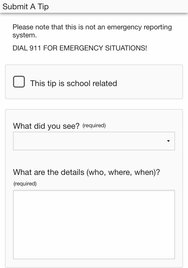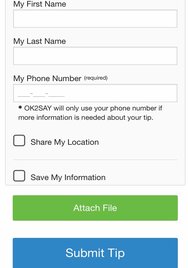Are QR codes the best way to prevent misconduct in school?
October 30, 2018
In fall 2018, the administration implemented a new system to prevent misconduct, especially in the bathrooms where, historically, there has been a lot of vandalism. The administration created a QR code that allows students to submit tips when they witness vaping or vandalism in school bathrooms or elsewhere.
At the beginning of the year, the QR codes were only posted outside of the bathrooms. However, students were adamant about not using the QR codes because they were fearful of others witnessing them using the QR code. Students were worried about being labeled as “snitches.”
To combat this problem, the school media specialist, Marsha Thompson, put QR codes on the backs of the student hallway passes in each classroom, allowing students to discreetly report others participating in inappropriate activities.
Vaping in bathrooms (and elsewhere) bothers many, and it’s harder to detect. According to the National Youth Tobacco Survey, between 2011 and 2015, 1 in every 14 high school students used some form of tobacco products (including vaping). This number has risen since that survey because of the availability of vaping materials in many stores.
The QR codes could help lower vandalism, too. From writing on the walls to sinks on the ground, vandalism causes the restrooms to be periodically closed, frustrating everyone. By implementing the QR codes, administrators will have a better idea of who the culprit of the crimes may be.
Assistant Principal Michelle Gilmore said, “Student focus groups decided to use the QR codes. The goal is to reduce vandalism and vaping in school bathrooms.”
She also said, “The info from the QR codes at the beginning was slow, but they have been gaining more information over time.”
Gilmore also believes that with the QR codes now being on the back of bathroom passes more students will begin to speak up.
A significant problem with the QR codes includes that many students do not have a QR reader on their phones. In addition, students do not always have their passes with them. While students are supposed to carry hallway passes any time they’re in the hallway, sometimes students have a handwritten note from a teacher or no note at all.
If they don’t have the QR reader to scan, the misconduct goes undocumented. In these situations, time is of the essence and if a student reports the incident when they return to class, they could forget crucial parts of the incident or the student at fault could have already returned to an unknown classroom.
While the QR codes are a step closer to reducing these crimes, there is a much better way to streamline incident reporting in the form of an app, similar to Michigan’s OK2Say app.
The OK2Say program was started by the state of Michigan with the purpose of providing a discreet service where students could report school problems or threats. It is designed to combat a “culture of silence” among students. This culture of silence is an unspoken code where students become afraid to report an incident out of fear of being shamed by their peers.
OK2Say is available in the form of an app, which is the most efficient way to report information. Tips go to trained specialists, who then handle the situation appropriately.
If the OK2Say app had the capability to catch this student, it would be able to catch other problems that are prevalent at Linganore. Students could be identified in numerous ways through the app. For example, when submitting a tip, there is an option to attach a picture to the form. A picture could identify the location of the vandalism, as well as the suspect. In the app, there is also an option to detail the incident. This allows students to be able to submit the names of suspects, as well as more details on what happened.


Bullying is also a problem at almost every school. The QR code does not allow students to report bullying. In order to report an incident of bullying, a student has to talk to administration in person. Students then are hesitant to report it, and the crime goes unnoticed. This leads to students feeling helpless at their own school.
Senior Jake Santis said, “I wish there was a better way of reporting bullying. Most times I can’t report it because it is too much of a hassle to go to the AP office.”
Future technology is the key to making every school safer and more efficient. If Linganore could design a new app to allow students to report misconduct at any time, or anytime they witness it, Linganore would be a better place. Students would not be hesitant to report vaping, vandalism, or bullying.
Gilmore said, “We are always striving for more and brainstorming new ways to make Linganore better. Once we find out more information about the app we definitely can look into it.”






